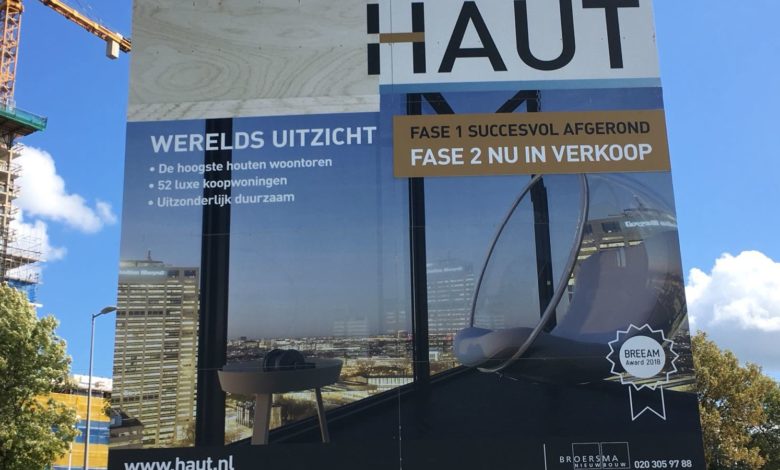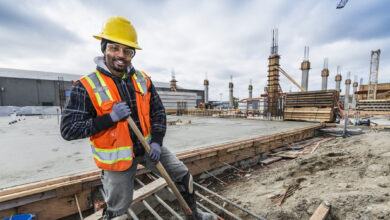
Photo: HAUT Amsterdam
EnvironmentTechnologyConstruction Goes Back to Nature, as Wood Replaces Concrete
There is a new trend in the construction industry, helping to reduce carbon dioxide emission: more and more developers and architects build with wooden structures, as an alternative to high-rise buildings made of steel and concrete.
The switch to bamboo and wood, following efficient regulations and management of forests, helps reduce carbon footprint as wood stores large amounts of carbon for years.
Eleena Jamil, a Malaysian architect who has designed residential and commercial structures with bamboo and wood, explains that bamboo and timber are “easy to dismantle, reuse and adapt, compared to concrete,” making it a particularly suitable option for cities prone to fast-paced changes.
HAUT, the tallest wooden residential building in the Netherlands, stands at 73-metres tall as Amsterdam’s example of sustainable construction. Designed by Team V Architects in cooperation with Arup, the building is set to receive the BREEAM Outstanding label, the highest possible sustainability certification.
“New technology, combined with accurate computer fabrication, now enables a wooden building to be assembled incredibly fast, like a giant piece of flat-packed furniture,” says Andrew Lawrence, timber specialist at Arup.
The manufacture of steel, concrete and brick accounts for about 16% of global fossil-fuel consumption – and up to 30% when transport and assembly of the materials is considered, according to the Yale School of Forestry & Environmental Studies.



